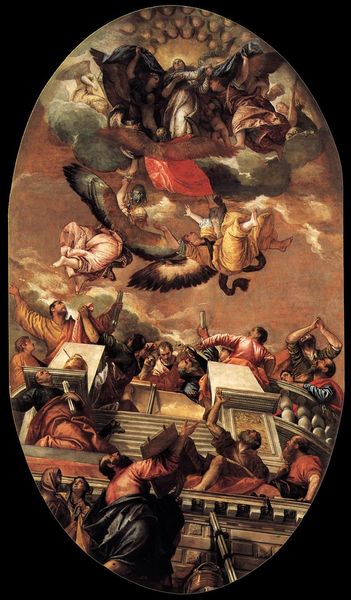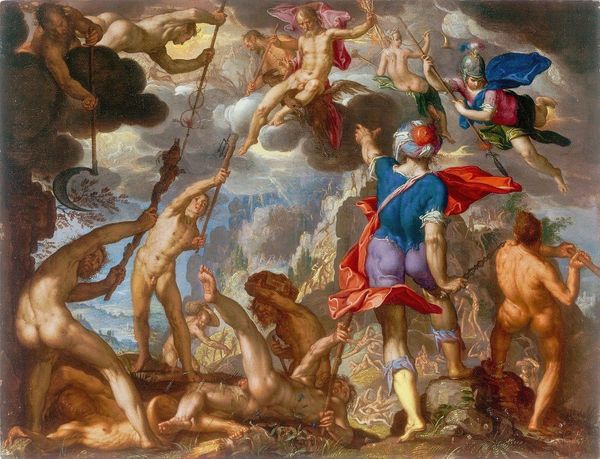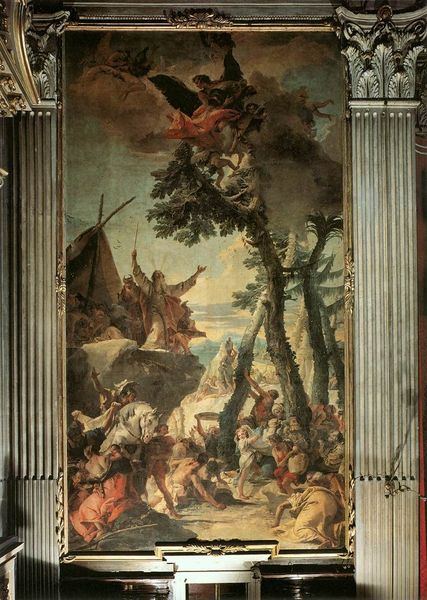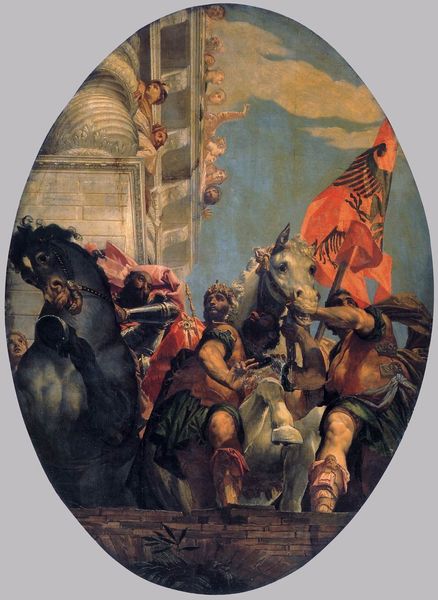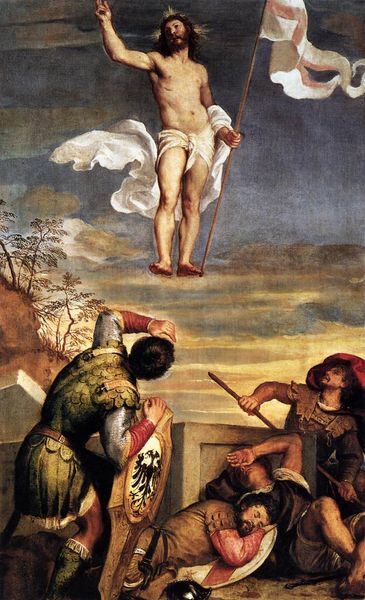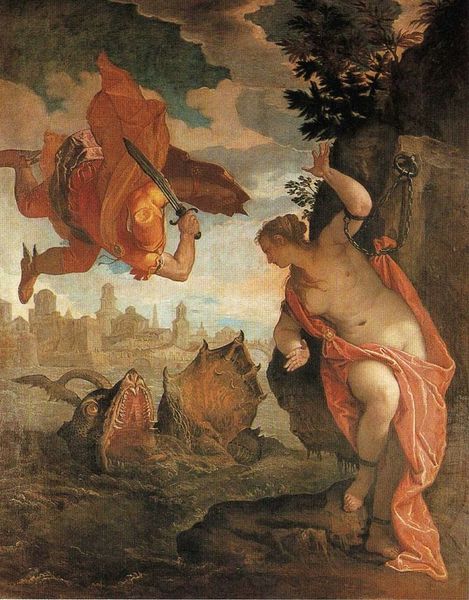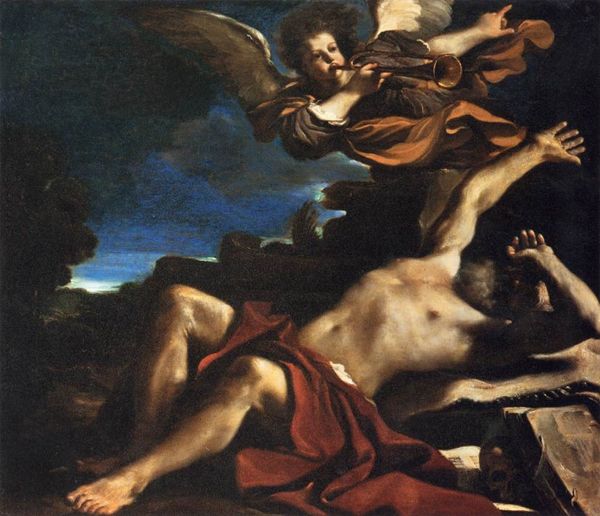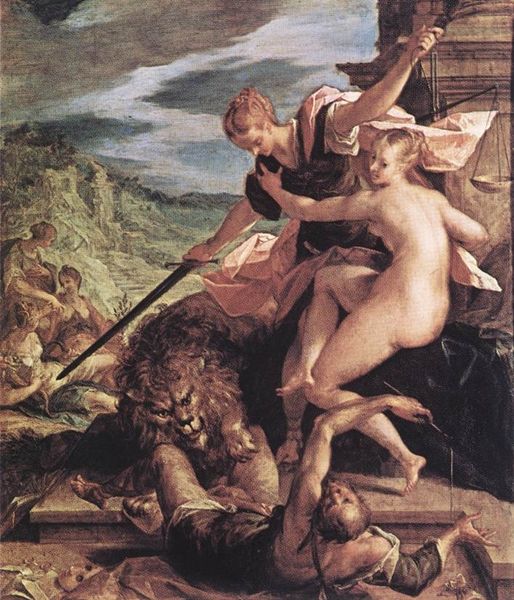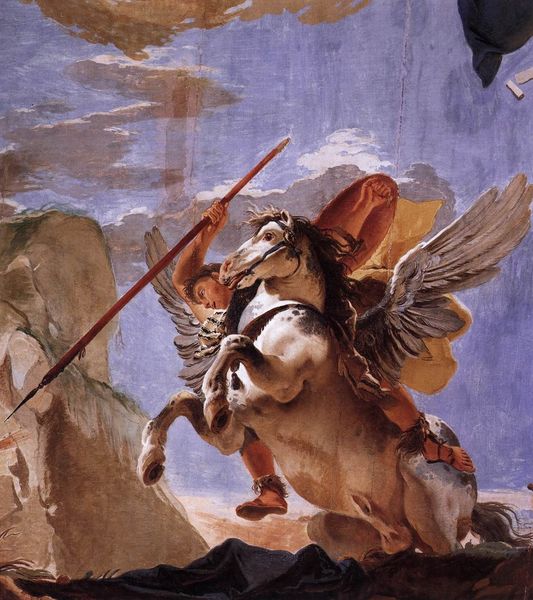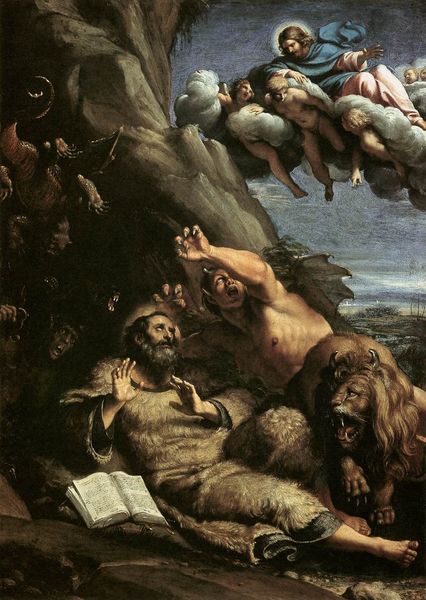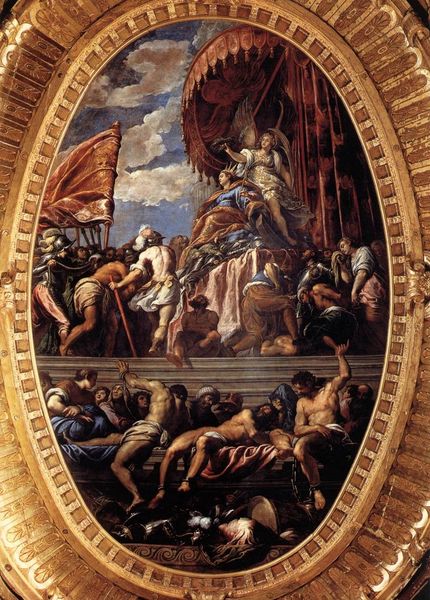
oil-paint
#
venetian-painting
#
allegory
#
oil-paint
#
mannerism
#
painted
#
figuration
#
oil painting
#
roman-mythology
#
mythology
#
history-painting
Dimensions: 250 x 180 cm
Copyright: Public domain
Paolo Veronese painted "Mars and Neptune" in the 16th century, a period in Venice defined by wealth, power, and a complex social hierarchy. The painting, allegorical in nature, depicts Mars, the god of war, and Neptune, god of the sea, accompanied by symbols associated with Venice, such as the lion. The work was commissioned during a time when Venice was a major maritime power, and the painting served to reinforce the city's identity as a dominant force, both on land and sea. Veronese’s choice to include Mars and Neptune, along with other symbolic figures, reflects a culture steeped in classical mythology, using these figures to legitimize and celebrate Venetian power. The cherubic figures soften the martial tone of the painting, imbuing it with a sense of divine favor and inherent right to rule. Ultimately, "Mars and Neptune" captures Venice's self-image as a prosperous, divinely sanctioned republic, its identity intertwined with its economic and military power. It is a proud, yet carefully constructed statement of Venetian identity during a period of both opulence and political maneuvering.
Comments
No comments
Be the first to comment and join the conversation on the ultimate creative platform.

